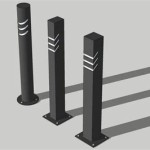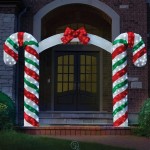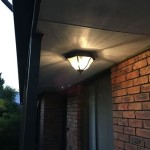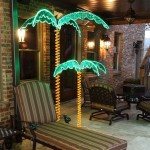Outdoor Landscape Lighting Design Guide
Outdoor landscape lighting design is an art form that enhances the beauty and functionality of an outdoor space. It transforms a simple backyard into an enchanting oasis, highlighting natural features and adding a touch of magic to the evening hours. By strategically placing light fixtures, choosing the right bulb types, and considering the overall ambience you desire, you can create a captivating outdoor experience. This guide provides a comprehensive understanding of the key elements involved in outdoor landscape lighting design.
Understanding the Purpose of Outdoor Landscape Lighting
The purpose of outdoor landscape lighting extends beyond mere illumination. It serves multiple functions, each contributing to an improved visual experience and a heightened sense of security and enjoyment. Here are some key purposes:
- Safety and Security: Adequate lighting deters crime, improves visibility for navigating pathways, and enhances security around the property.
- Aesthetics and Ambiance: This type of lighting transforms the look and feel of a space, creating different moods and highlighting specific features. It can enhance the beauty of trees, flowers, and water features, making your outdoor space more inviting and enjoyable.
- Functionality and Convenience: Lighting can highlight areas for entertaining, cooking, or relaxing, making these activities more enjoyable and safe.
Key Considerations in Outdoor Landscape Lighting Design
Designing effective outdoor landscape lighting involves several key considerations that determine the overall success of the project:
1. Light Source and Type
The type of light source and the kind of bulb you choose significantly impact the overall look and feel of your lighting design. Common types include:
- Incandescent Bulbs: These offer a warm, traditional glow but are not very energy-efficient.
- Halogen Bulbs: While offering bright light and a good lifespan, these bulbs can be quite hot and consume a lot of energy.
- LED Bulbs: These are highly energy-efficient, last longer, and come in various colors, making them a popular choice for outdoor lighting.
- Fluorescent Bulbs: These bulbs offer energy efficiency but might not be suitable for all outdoor applications due to their appearance.
2. Fixture Selection and Placement
The selection and placement of light fixtures are crucial for achieving the desired effect. Some popular types include:
- Path Lights: These low-voltage lights provide safe and even illumination for pathways and walkways.
- Spotlights: Used for highlighting specific features, such as trees or sculptures, providing a focused beam of light.
- Floodlights: These fixtures offer a wide beam of light, ideal for illuminating large areas like patios or driveways.
- Wall Sconces: Mounted on walls, these fixtures provide ambient lighting and can enhance the architectural features of your home.
- String Lights: These versatile lights can be strung along fences, trees, or across patios to create a festive ambiance.
3. Lighting Techniques and Layering
Different lighting techniques can be combined to achieve the desired effect. These techniques include:
- Uplighting: Directing light upwards to illuminate trees, walls, or other vertical structures, creating a dramatic effect.
- Downlighting: Illuminating areas from above, using fixtures like trees or umbrellas to provide soft ambient light.
- Silhouetting: Placing light behind objects to create a silhouette, highlighting their shape and form.
- Moonlighting: Using a single, high-mounted light to cast a soft, moonlike glow over the landscape.
- Cross Lighting: Using two light sources to illuminate an object from opposite sides, creating depth and dimensionality.
4. Color Temperature and Ambiance
The color temperature of your light bulbs influences the overall ambiance of your outdoor space. Warm white light (2700-3000 Kelvin) creates a warm, inviting atmosphere, while cool white light (4000-4500 Kelvin) provides a brighter, more energizing ambiance. Consider the mood you wish to create when selecting your lighting.
Benefits of Professional Outdoor Landscape Lighting Design
While DIY landscape lighting is possible, hiring a professional offers significant advantages. Professionals possess expertise in:
- Site Analysis and Design: Identifying the best locations for fixtures and determining the appropriate lighting techniques for each area.
- Electrical Installation: Ensuring safe and compliant wiring according to local building codes.
- Lighting Control Systems: Implementing smart lighting automation for convenience and energy efficiency.
- Aesthetic Design: Creating a cohesive and visually appealing lighting scheme that complements your home and landscape.
By investing in professional design and installation, you can enjoy a beautifully illuminated outdoor space that enhances your home's value, safety, and enjoyment for years to come.

Landscape Lighting Design Overview

Landscape Lighting Design Overview

Outdoor Landscape Lighting Design Tips Ideas Environmental Designs

Outdoor Landscape Lighting Effects Garden Design

A Landscape Lighting Guide For Beginners Metrogreenscape

Landscape Lighting Design Guide Everything You Need To Know

How To Choose A Landscape Lighting Design That Fits Your Home

Outdoor Landscape Lighting Design Tips Ideas Environmental Designs

Design Guide For Your Home S Outdoor Lighting

Outdoor Accent Landscape Lighting Guide Delmarfans Com







